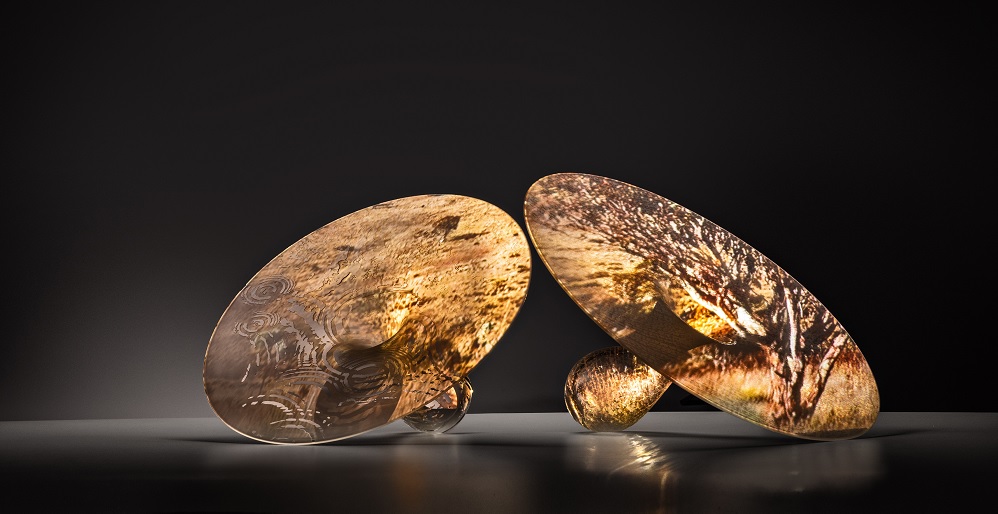Holly Grace & Sarah Tomasetti – Finalists in the 2024 Fleurieu Biennale Art Prize
Image above: Sarah Tomasetti From Balpatta X 2024 145 x 150 cm pigment oil and marble dust on fresco
Congratulations to Holly Grace and Sarah Tomasetti who have been selected as finalists for the 2024 Fleurieu Biennale Art Prize
The exhibition of finalists’ works will be on view from 8 June – 14 July at the Fleurieu Arthouse in the beautiful McLaren Vale, South Australia. The gallery is open daily 11am to 4pm.
The Fleurieu Biennale Art Prize for landscape was established by David Dridan, Greg Trott and Tony Parkinson in 1998. This year, the exhibition features works exploring the theme A Sense of Place. There are three prizes: The Fleurieu Art Prize $20,000, Emerging Artists Prize $5,000, and a People’s Choice award of $2,500. The judges are Lisa Slade, Assistant Director, Artistic Programs at Art Gallery of South Australia, Brian Parkes, CEO at Jam Factory and Nicholas Folland, Head of Contemporary Studies and Sculpture at Adelaide Central School of Art. Image above: Holly Grace Resonant Landscapes 2024 overall dimensions 35 x 90 x 35 cm
Image above: Holly Grace Resonant Landscapes 2024 overall dimensions 35 x 90 x 35 cm
Regarding the above work, artist Holly Grace shares this statement:
“The artwork Resonant Landscapes is a new body of work, based on concepts of portraiture and portraits of a place, themes initially developed during a recent artists residency at the National Portrait Gallery and at Gudgenby Cottage in the Namadgi National Park. As part of the residency experience I created a collection of blown glass sound receptors based on the inner ear structures of birds and humans. These glass receptors became my acoustic horns, resonant structures to receive and record natures soundscape built from the songs of birds, crickets, frogs, to the gentle rush of water, the rustle of wind through eucalyptus leaves and snow grass.
Within this artwork I explore the many chameleon qualities of glass. It is an instrument for sound and a canvas for light, creating both a personal memoir and a sense of a place. Using both the camera and glass as my tools, I explore the Namadgi wilderness hoping to discover where I belong in this ancient landscape and how walk light in this increasingly fragile environment.”
Sarah Tomasetti in ‘Birrarung: On the River’ – Group exhibition at Chapman & Bailey
Sarah Tomasetti Rivus (detail) 2022 pigment and wax on fresco plaster on muslin dimensions variable current installation 4 x 1.5 m
Sarah Tomasetti’s evocative work Rivus is now showing at Chapman & Bailey Gallery as part of the group exhibition Birrarung: On the River
During lockdown I began to walk along the river daily, and was overjoyed to meet the local swimming group, and take my first cold plunge into the river last August. As my relationship to the country of Birrarung deepened through walking and swimming, I began to see the echoes of stone, mud and water in the confluence of the lime putty, marble dust and pigment I use in the studio. Rivus is a response to the way stone and sky become one in the reflections of the river, and likewise the way community is held within the life of her endless movement, particularly at the thresholds of dawn and dusk.
– Sarah Tomasetti, 2022
Birrarung: On the River – Group Exhibition
A tribute to living and working with the life source of Birrarung the Yarra River. Drawing on a mix of professional artists and the wider community of Birrarung devotees in response to living and working on the river.
Featuring Melody Spangaro, Heather Hesterman, Sarah Tomasetti, Mark Chapman, Nicola Reavley, Heidi Peters, Michelle Yuan Fitz-Gerald, Jade Barnaby, Charlotte Ghaie, Talitha Kennedy, Michaela Meadow, Michaela Hart, Joanna Buckley
Now showing until 28 April 2022
Chapman & Bailey Gallery
350 Johnston St
Abbotsford Melbourne
03 9415 8666
gallery@chapmanbailey.com.au

Sarah Tomasetti Rivus 2022 pigment and wax on fresco plaster on muslin dimensions variable current installation 4 x 1.5 m
These banners are made using the materials and techniques of ancient fresco painting, a means of surfacing and decorating walls with a breathable layer of plaster that absorbs pigments to become weatherproof. These materials work on all kinds of masonry including stone, brick, hebel and concrete block. In the case of Rivus, the insertion of muslin allows the plaster ‘skin’ to be detached from the working wall and suspended, and these can also be mounted on interior walls, re-embedding the artwork into the substrate of the building.
– Sarah Tomasetti, 2022
